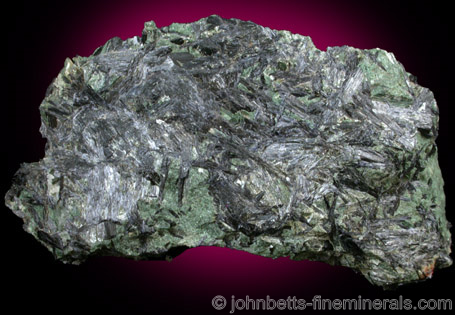The Mineral glaucophane

Glaucophane is named from a combination of the Greek words Glaukos, meaning "blue", and Phainelein, meaning "appearance", alluding to its bluish color. Glaucophane forms a series with the less-common Ferro-glaucophane, where Glaucophane is the magnesium-rich end member and Ferro-glaucophane is the iron-rich end member.
Chemical Formula
Na2Mg3Al2Si8O22(OH)2
Color
Blue, dark blue, and black with blue overtones
Crystal System
Monoclinic
Properties
Streak
Grayish blue |
Hardness
5.5 - 6 |
Transparency
Translucent to opaque. Rarely transparent. |
Specific Gravity
3.0 - 3.1 |
Luster
Vitreous, pearly |
Cleavage
1,2 |
Fracture
Uneven, splintery |
Tenacity
Brittle |
Varieties
-
Iron-rich variant of Glaucophane, which has iron dominating over the magnesium in a solid solution series. Ferro-Glaucophane is recognized by the IMA as a distinct mineral species with the following chemical formula: Na2Mg3Al2Si8O22(OH)2. There can be iron replacing some of the magnesium up to 50 percent.
-
Transparent to translucent variety of blue Glaucophane.
Noteworthy Localities
Glaucophane is more common than often perceived, though collector specimens of this mineral are seldom encountered, hence the few localities listed here. Groups of prismatic blue crystals come from Groix Island, Brittany, France; and transparent blue crystals from Rio Oremo, Chiavolino, Biella Province, Italy. In the U.S., Glaucophane is a constituent of the blueschist rocks throughout the Coast Ranges of Northern California, Oregon, and Washington. Dark blue crystals have been found in Ward Creek, Cazadero, Sonoma Co., California.
Distingushing Similar Minerals
Riebeckite - Usually darker in color.
Tourmaline - Harder, lacks good cleavage.